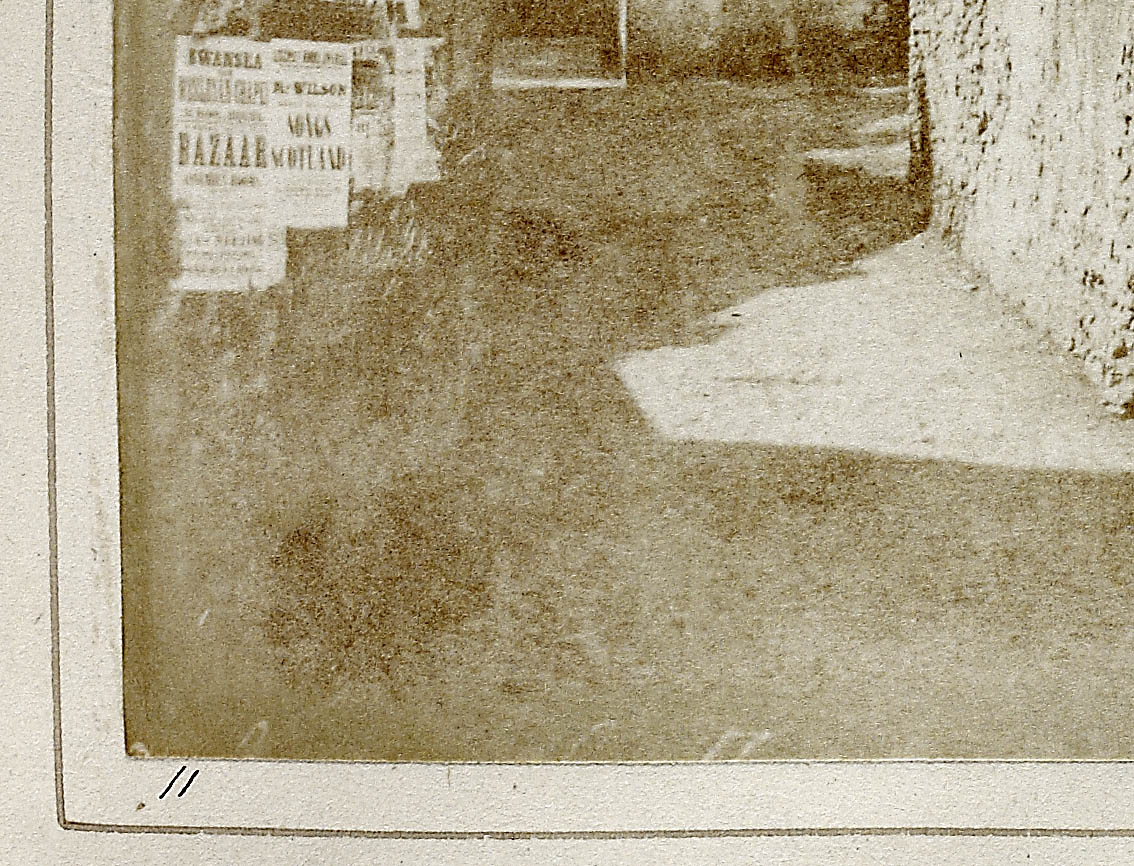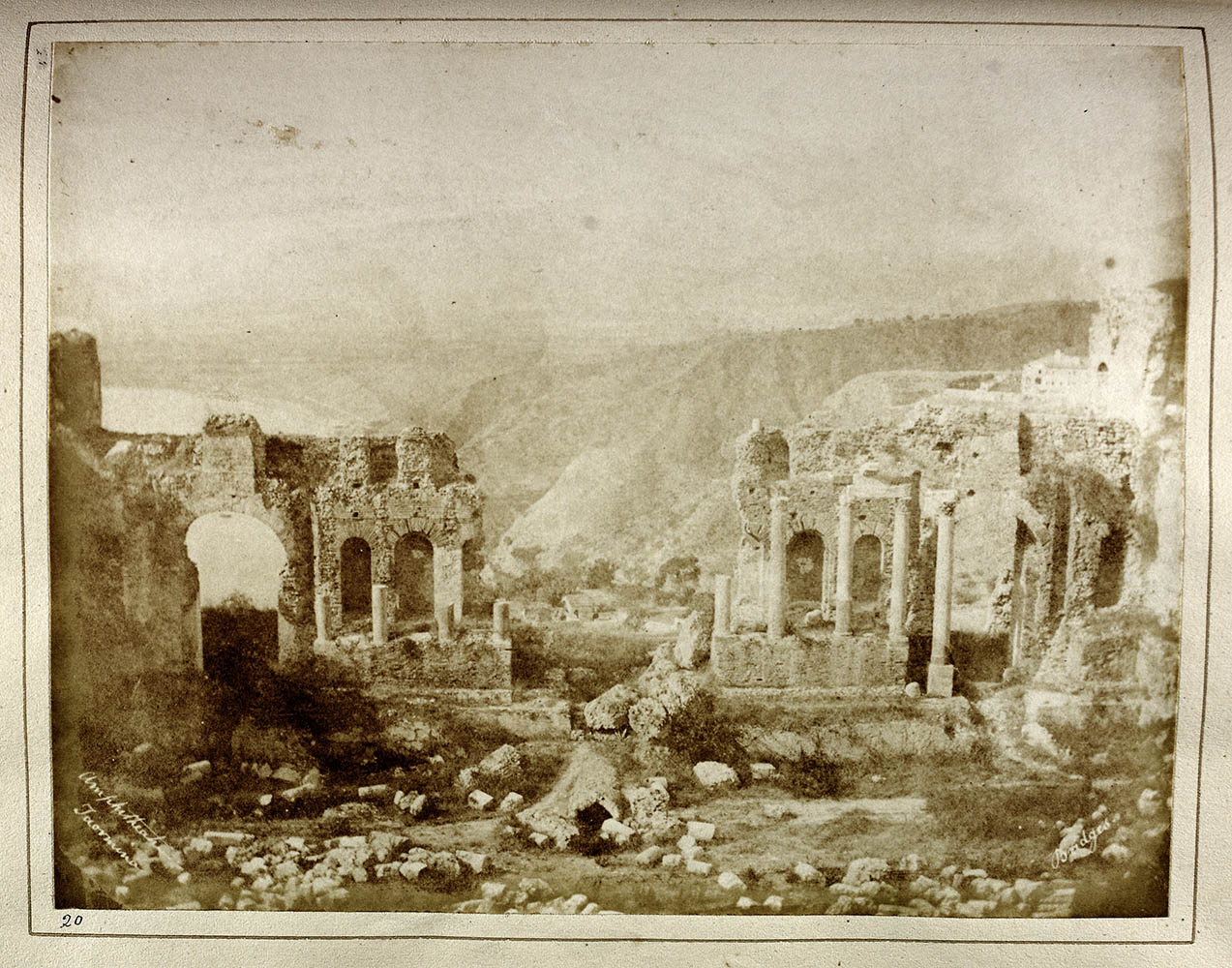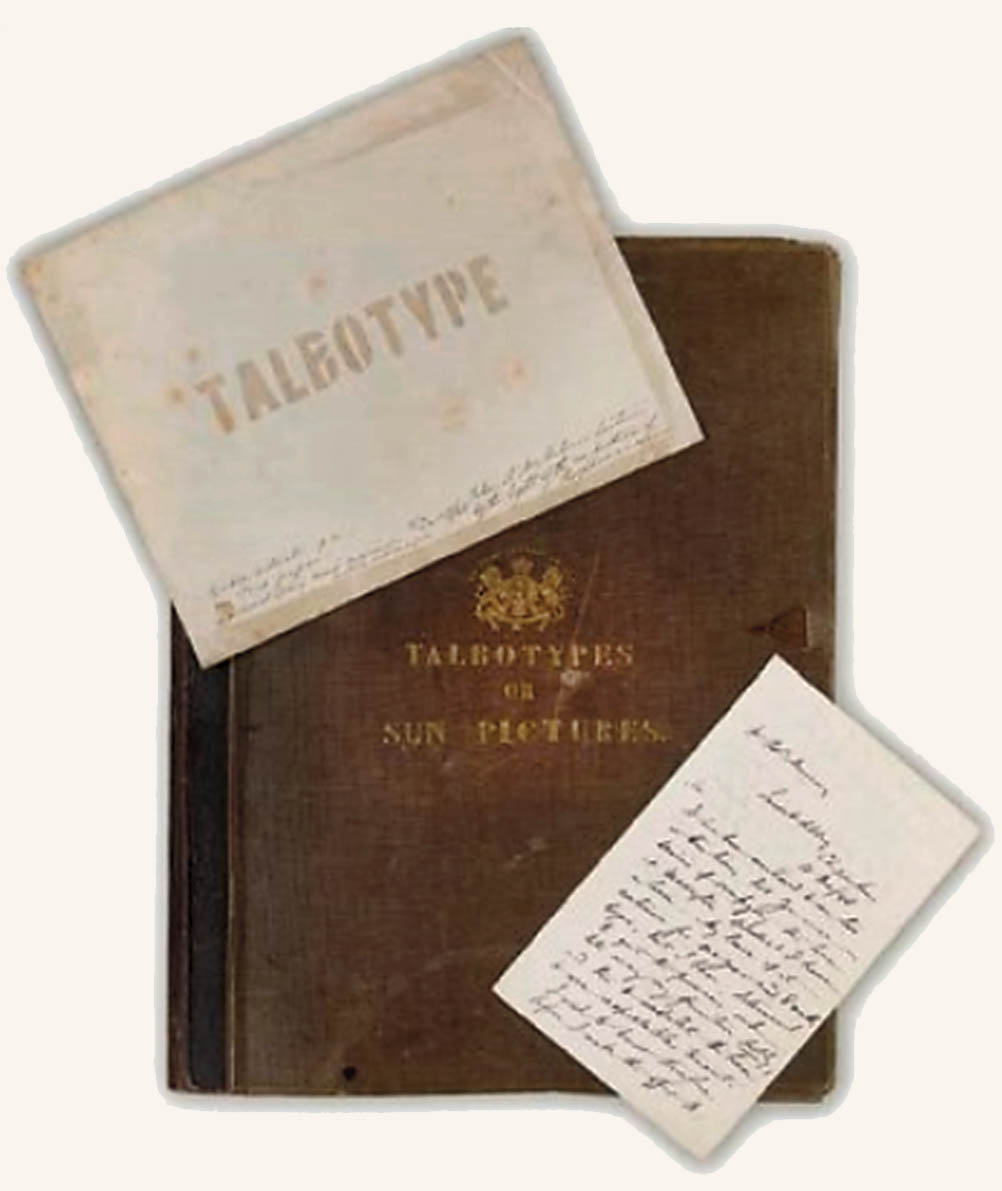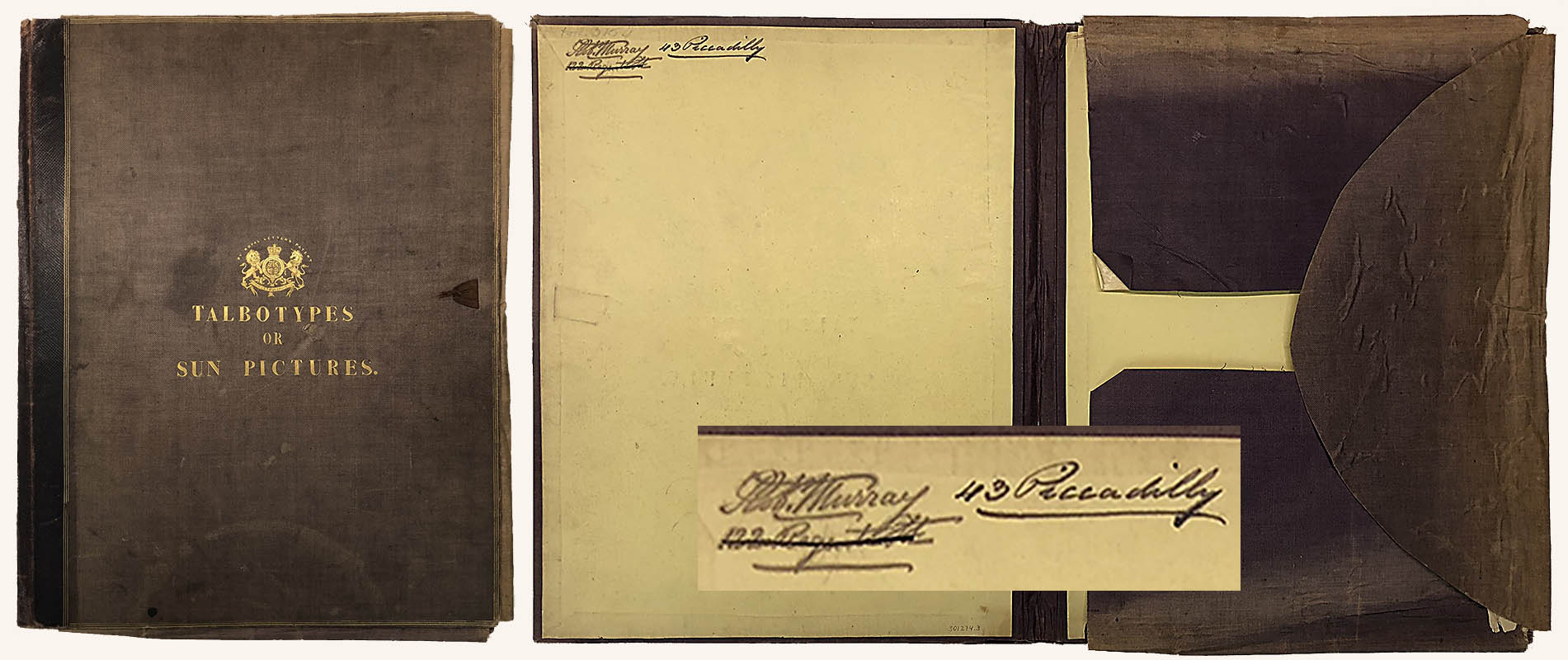Corporate records are amongst the most elusive of archives. As time goes by, the paper piles up and becomes increasingly irrelevant to current operations. When a company winds down its business, few care about preserving the past. And when a business spirals into failure, there is even less likelihood that the historical record will be defended. In the case of Nicolaas Henneman’s Reading and London operations, several factors mitigated against preserving its history. Henneman was never trained as a businessman, so it is unlikely that many conventional records were created in the first place. Most of what we know about his businesses is through his correspondence with his patron, Henry Talbot. There are a few lists, invoices and some notes, the latter often picked up from the verso of prints. He leaves us with many mysteries. One enigmatic volume is known to exist in a single example, perhaps as a maquette for an intended publication?
Talbotypes or Sun Pictures is bound as a single volume, consistent in page size and general treatment with The Pencil of Nature and Sun Pictures in Scotland. It comprises one page of letterpress and two dozen mounted salted paper prints.
Although the individual photographers are not credited, with one notable exception these are all readily identifiable. The two by Talbot are “The Broom” (better known as The Open Door) and Scene in a Wood. Henneman employed only one of his own photographs, Coley Avenue, Reading, and Henry’s relation Nevil Story-Maskelyne contributed Avenue, near Basset Down House, Wilts. The Rev George Wilson Bridges supplied six images and the Rev Calvert Richard Jones took up more than half the volume with thirteen. That leaves one loosely identified contributor who supplied the Chess Players (and, no, I still haven’t figured that one out yet).
Calvert R Jones, 11. Old Castle, Swansea (detail)
Each of the prints was mounted on a lightweight board, ruled and numbered in ink just below the print. In The Pencil of Nature, these numbers were uniformly on the right, but for this volume they are on the left. Don’t miss the partially trimmed-off inscription printed through from Calvert Jones’s negative, above.
Although Henneman helpfully dated his volume 1847, we know nothing else about it. He started advertising his Regent Street operation with regularity in the autumn of 1847. Instead of being a maquette, was this possibly a studio reference album for potential customers to examine? There is another possibility. In March 1847, Henneman reported to Talbot that he was considering engaging Owen Bailey (1813-1866), a London-based Importer of Works of Art, Printseller & Publisher, to act as a commercial traveler to find new outlets for the Talbotype. Could this have been a sample book for Bailey to show? Or perhaps even produced in quantity for Bailey to leave with potential customers? This possibility is an exciting one, for it raises the prospect that other copies of this publication may have been preserved far from Lacock Abbey. Sadly, the relationship was short-lived, for Bailey found that it was not profitable for him and soon dropped out.
The one known example of Talbotypes or Sun Pictures was preserved in Lacock Abbey, presumably turned over to Talbot as partial reimbursement when Henneman abandoned his dream, and was part of Matilda Talbot’s 1934 donation to The Science Museum. The prints in it are uniformly faded, so I have given these copies a little bit of help to bring them closer to what a viewer would have experienced in 1847.
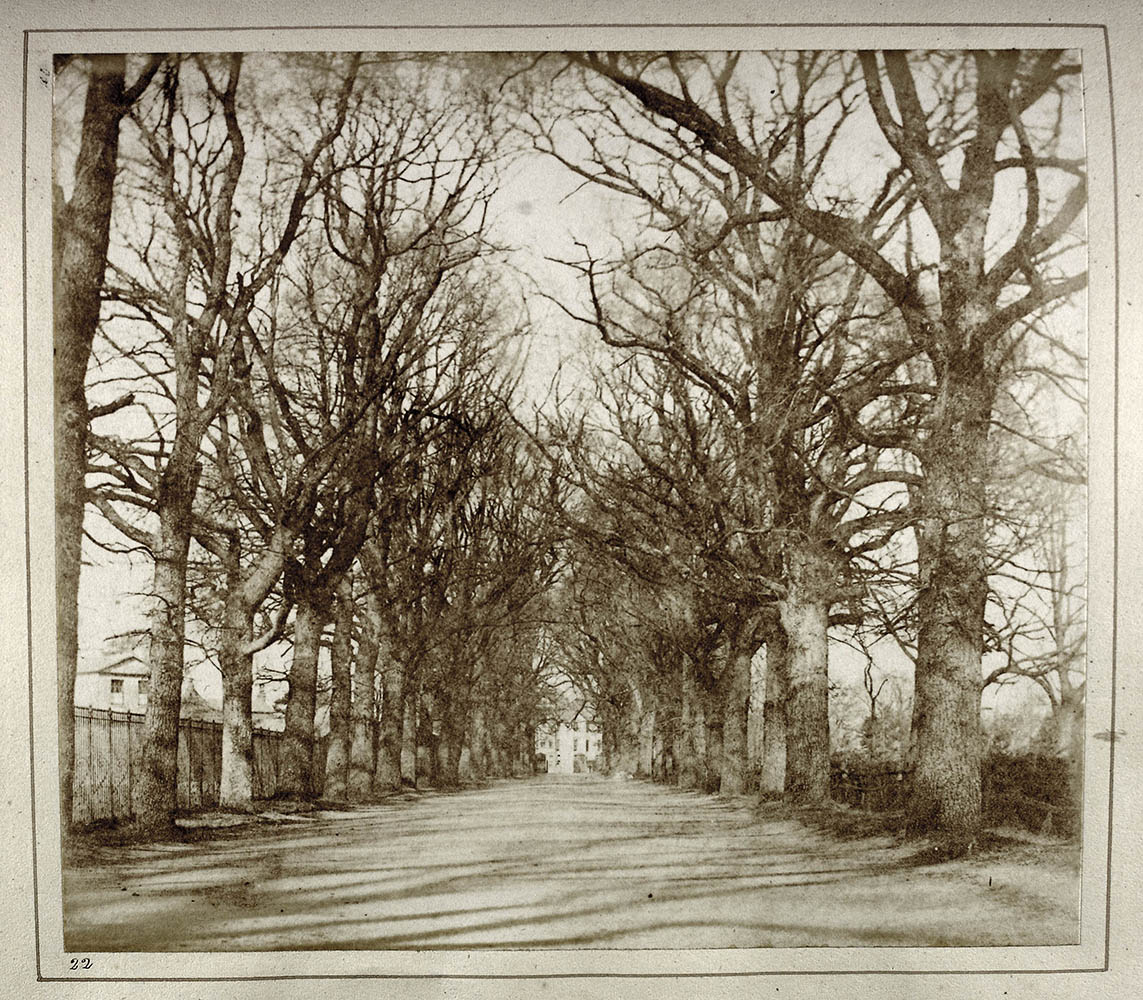 Nicolaas Henneman, 22. Coley Avenue, Reading
Nicolaas Henneman, 22. Coley Avenue, Reading
Calvert R Jones, 15. Brig and Barque, Aground, Swansea
George W Bridges, 20. Amphitheatre, Taormina, Sicily
There is a possible continuation of Talbotypes or Sun Pictures, again known only in a single example. In 2005, Christie’s in London offered a small group of material from the collection of Robert Murray (1798-1857). This Irish-born instrument maker based himself in London at John Newman’s, and from 1855 was a photographic partner with Vernon Heath. Both Murray and Heath were collectors. Heath’s 1892 honestly-titled Recollections is a must-read. Although based on memory, undoubtedly embellished over the years, it is an irreplaceable source for early history.
One part of this lot is a well-produced volume that echoes Henneman’s publication. Its cover stamped with the Royal Warrant, it belongs to the period when Henneman was in partnership from 1847 – July 1851 with the chemist, Thomas Augustine Malone (1823-1867). They were Photographers on Paper to the Queen. One wonders what the portfolio once contained? We will never know.
Was this a unicum, perhaps like Henneman’s Talbotypes or Sun Pictures, ? Or is there hope of finding others like these in a different collection some day? Start hunting!
Larry J Schaaf
• Questions or Comments? Please contact digitalsupport@bodleian.ox.ac.uk • Nicolaas Henneman, Talbotypes or Sun Pictures, Taken From The Actual Objects Which They Represent (London: Nicolaas Henneman, 1847). National Science and Media Museum, Bradford, 1937-2530. Special thanks to Geoff Belknap for assistance on this. • Calvert R Jones, 11. Old Castle, Swansea (detail), salted paper print from a calotype negative, NSMeM, 1937-2530/12; Schaaf 2969. • Nicolaas Henneman, 22. Coley Avenue, Reading, salted paper print from a calotype negative, NSMeM, 1937-2530/23; Schaaf 326. • Calvert R Jones, 15. Brig and Barque, Aground, Swansea, salted paper print from a calotype negative, NSMeM, 1937-2530/16; Schaaf 2963. • George W Bridges, 20. Amphitheatre, Taormina, Sicily, salted paper print from a calotype negative, NSMeM, 1937-2530/21; Schaaf 3320. • Henneman & Malone, Talbotypes or Sun Pictures, Portfolio; private collection, courtesy of Hans P. Kraus, Jr., Inc., New York




